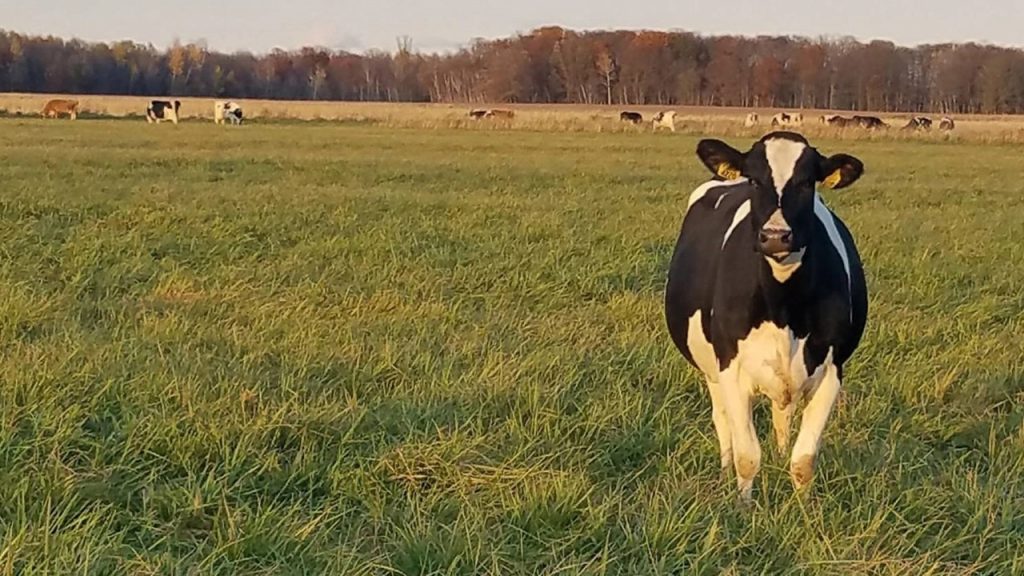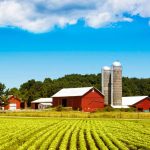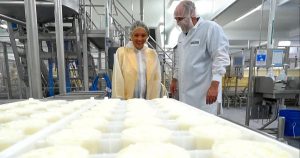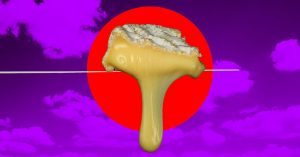
Dairy Outlook: Dairy replacements are limited and are expected to be short through 2026 or 2027.
In early September, cheddar block prices climbed to $2.27 per pound.
“That’s the highest spot price in 27 months on the Chicago Mercantile Exchange, and it points to how tight cheese supplies have gotten both in the U.S. and Europe, which represent the world’s two largest cheese-producing regions,” says Corey Geiger, lead dairy economist at CoBank.
Class III futures rise
This is a profound reversal of fortunes for dairy farmers, Geiger explains, noting that the European Union has had an outbreak of bluetongue, and the U.S. still has issues with highly pathogenic avian influenza. Earlier this year, cheese prices were slumping, with the prospects of some $4 billion of new cheese plant capacity coming on line and new cheese production searching for a home.
“That caused the Class III futures prices for cheese and whey to become inverted when compared to the Class IV prices for butter and powder products,” Geiger says. “That’s an unusual market situation, to be certain. Some predicted, including yours truly, that inverted markets could be with us through 2024 and perhaps into 2025.”
Since the start of 2024, Class III futures were trending below Class IV right through the Labor Day weekend. Specifically, in June the bundle of September-to-December Class III contracts was trading near a $20 average, and Class IV netted $21.50 for those same months — a $1.50 inversion. Leading up to Labor Day, those same final four months of 2024 averaged $21.95 for Class III and $22.40 for Class IV.
“Just one week later, the Class III bundle average moved higher to a $22.90 average and pushed past the September-to-December Class IV average of $21.50, all because of climbing spot cheese prices,” Geiger says.
Price inversion may reappear
While this represents good news for dairy farmers producing milk in high cheese market areas, such as the Midwest, traders don’t believe the trend for higher cheese prices is certain to hold.
“That bears out when looking at CME futures for 2025 when the Class III to Class IV inversion reappears,” Geiger says. “The four-month average for January-to-April 2025 Class III futures is $19.80 and $21.50 for Class IV, based on early September trading at the CME.”
Near term, there’s good reason for the higher prices and buying interest for cheese moving into the fall, he says. “Cheese, along with butter, have their highest sales volume in the winter holiday season,” Geiger says. “No retailer wants to be short on either product. That’s what has caused near-term Class III futures to climb nearly $3 per cwt from early June to early September trading.”
There’s another reason that markets have moved higher — supply.
“In July, milk production was down for the 13th straight month. If this downward trend holds, 2023 and 2024 would become the first time since the late 1960s that U.S. milk volume declined for back-to-back years,” Geiger says.
Just how unusual is this downturn in milk production?
“The normally steady USDA National Agricultural Statistics Service even revised its June milk total down from 1% to 1.7% from its July to August reports,” he says. “That speaks to the unique market forces taking place in U.S. dairy.”
Sky-high dairy replacement prices
Dairy replacements are tight and will remain tight for the next two to three years at a minimum. Regrettably, USDA discontinued its July Cattle report. Had it produced that semiannual report, dairy replacements of 500 pounds and larger would have been down even further from January totals — which already was at a 20-year low, Geiger notes.
“Scarce dairy replacements are fetching as high as $3,000 at auction,” he says. “That’s causing dairy farmers to pull way back on dairy cow culling. From January 2024 to late August 2024, U.S. dairy farmers collectively culled 301,400 fewer head of dairy cows when compared to the same time last year.”
Overall, dairy cow culling has been down every week since Labor Day 2023. When looking back to that period, the nation’s dairy farmers culled 439,200 fewer head when compared to the previous 52-week window.
“To be certain, some of these cows that remain in the herd are not as productive as a new replacement would be,” Geiger explains. “Given replacements are so tight, dairy farms considering expansion are looking to create and grow their own replacements now that replacement prices have shifted from $1,600 to $3,000 in the past 15 months. However, it will be at least three years before homegrown talent reaches the milking string. In the meantime, the upside for milk production growth will be capped in the United States.”
You can now read the most important #news on #eDairyNews #Whatsapp channels!!!
🇺🇸 eDairy News INGLÊS: https://whatsapp.com/channel/0029VaKsjzGDTkJyIN6hcP1K






















